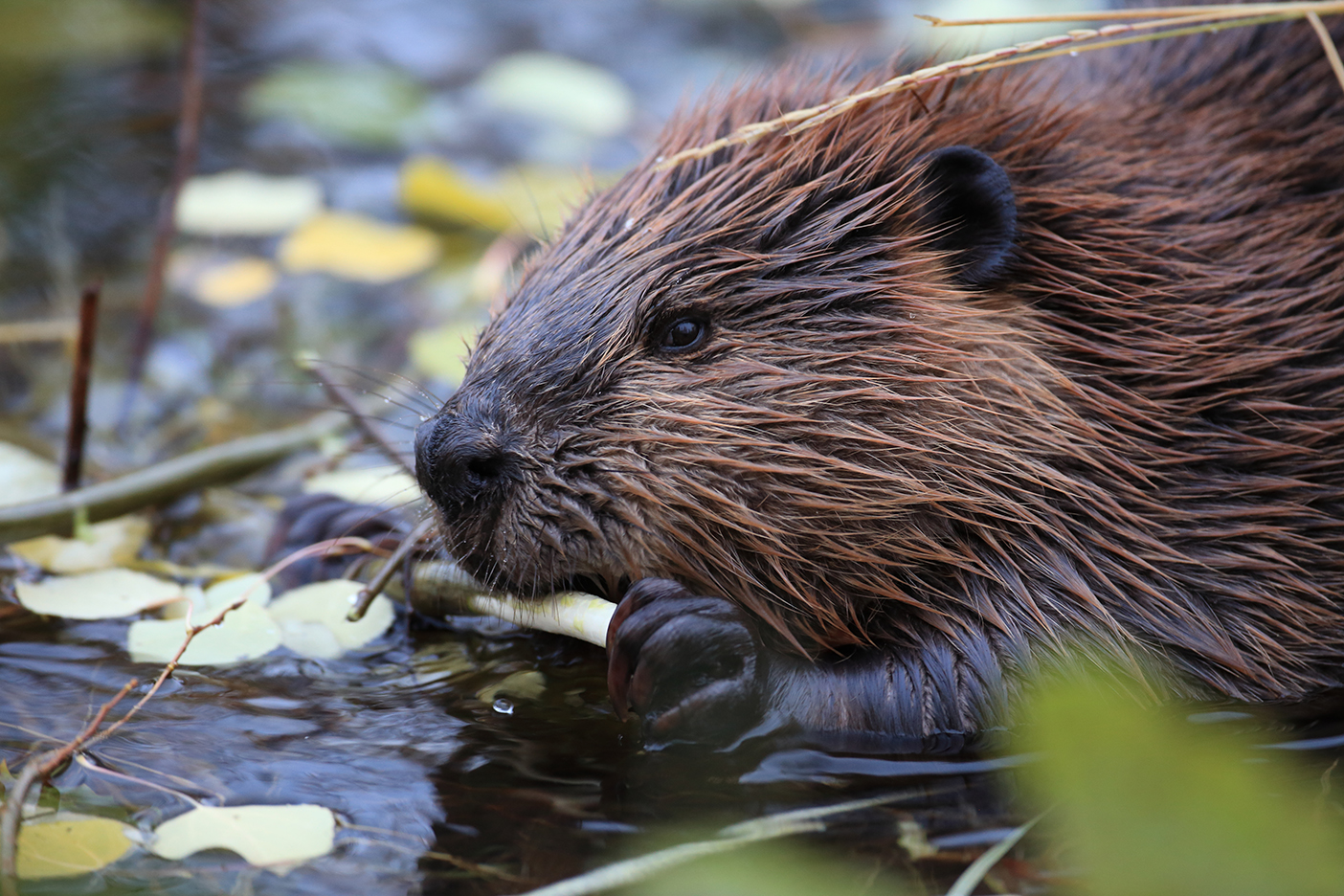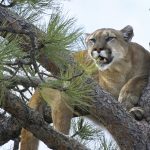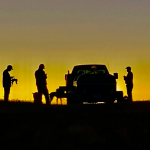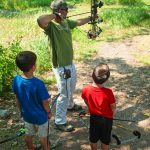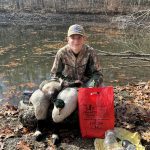…and other cautionary tales of ballot-box biology.
The story of ballot-box biology is a tale of two different realities, where the information presented to the public tends to be very different from what happens when the measure is approved. This divergence, the result of targeted disinformation campaigns by special-interest groups, has played out countless times across numerous states, and it puts the very future of hunting at risk nationwide. To better understand the dangers, one has only to look at the unfortunate story of Massachusetts’ burgeoning beaver population.
Historically, Massachusetts successfully managed its beaver population through regulated harvest and reporting in the form of licensed trappers.1 These trappers paid the state for an annual trapping license and recouped their costs by selling the beaver pelts on the commercial fur market (as well as enjoying the meat, which is generally considered delicious). With this system, state biologists could control beaver numbers by annually modifying the regulations – such as raising or lowering the harvest limit and expanding or contracting the trapping season. This system also helped prevent human-beaver conflicts and damage, because any “problem” animals could be proactively removed during the trapping season, when the beaver young were independent, and the pelt and meat could be fully utilized. In this way, trappers, working in conjunction with state biologists, were able to maintain the beaver population within both social tolerance levels and the biological carrying capacity of the landscape.
The system began breaking down with the onset of two problems, the first being a decreasing number of trappers. Fluctuations in the commercial fur market (spurred in part by anti-fur campaigns) made it more and more difficult for trappers to cover their expenses. The second problem arose from expanding human development in the form of suburban sprawl, which began encroaching into beaver habitat and creating greater incidents of conflict.
A solution was needed, but not the one that was soon proposed. As the problems came to a head, in stepped a coalition of special-interest groups, including the Humane Society of the United States (HSUS). These groups started an anti-trapping campaign, advocating for the banning of “cruel” devices such as foot-hold traps and the Conibear (formerly approved by the American Humane Association). They created a targeted television ad campaign, implying that pets and children were caught and harmed in the traps (which was untrue), as well as showing traps and trapping practices that were already illegal under Massachusetts law. It was a now-classic tactic: swaying public opinion by utilizing disinformation and pulling on emotional heartstrings.
In this manner, enough signatures were collected to put a proposed trapping ban on the state ballot in 1996. Meanwhile, the Massachusetts Division of Fisheries and Wildlife (MassWildlife) refuted the HSUS claims, noting that wildlife scientists used padded foot-hold traps to catch, release, and tag animals without harm, and that banning such traps would greatly hamper state efforts to manage beavers, muskrats, and other animals. The special-interest groups protested this, claiming that MassWildlife was lobbying, which government officials were legally barred from doing. In response, the state ordered MassWildlife to stop, effectively silencing the very people tasked with managing its wildlife.
Later that year, 64 percent of voters approved the ballot measure, meaning that now only “humane” cage-style live traps could be used. The few remaining trappers did not want to invest in the far more expensive and heavy live traps, so they quit.2 Beaver and muskrat populations exploded, as did related damage, threatening infrastructure such as electric and communication towers as well as community water supplies. Damage complaints increased by 90 percent, and as most of these complaints required site visits, MassWildlife staff were forced to shift their focus and resources away from wildlife conservation priorities and instead spend time and money resolving human/beaver conflicts.3
The special-interest groups downplayed this development, saying that beaver populations would stabilize over time based on available habitat and food.4 Unfortunately, housing developments continued to expand along with increasing beaver populations, bringing more people into more conflict with beavers as they encroached on their habitat.
This demonstrated the important reality that the social carrying capacity of a landscape (meaning the tolerance of people for wildlife) is often much lower than the biological carrying capacity (how many beavers can live in the existing habitat). As conflicts kept rising, the beaver was turned from a beloved and valued creature into one viewed as a public nuisance.5 To quote Bill Davis, a spokesman for MassWildlife, “The majority of the voting public was very well intentioned but very misinformed. I think this is what happens when you take a wildlife management issue and make it a political one.”6
The irony was that few, if any, of the voters in favor of the anti-trapping ballot measure truly understood what it entailed or how far-reaching its consequences would be, and here was where the two realities diverged. On the one hand, the message of the anti-trapping campaign was, essentially: Vote for this initiative and animals won’t die. However, the reality was that using live traps didn’t change the outcome – the animals trapped by wildlife officers were still killed, since relocating wild animals in Massachusetts is illegal (and for good cause, namely related to disease).7
With almost no natural predators on the landscape outside of humans, beaver populations still needed to be reduced to maintain proper carrying capacities on the land. The difference was that now it mostly occurred out of the public eye in the form of nuisance/damage permit removals, in numbers higher than trappers had ever formerly removed.8 And instead of the animals being utilized, they generally just ended up in the landfill. Instead of helping to fund state wildlife and habitat conservation through the sale of trapping permits, beaver management now consumed taxpayer dollars and funded private wildlife nuisance control businesses instead. The public perception of beavers changed, and as a result, tolerances had drastically decreased. Ballot-box biology had won, but at what price to wildlife?
After this success in Massachusetts, the special-interest groups realized they had an effective blueprint to utilize across every state in the nation, and so they did, playing out the same emotional disinformation campaigns in Colorado, New Mexico, California, and even in my own Washington State, where in November of 2000, Initiative 713 (I-713) was passed by 55 percent of the voters. Yet again, the text of the legislation proposed did not match the regulations eventually passed. The original voter’s pamphlet described I-713 as protecting people, domestic pets, and wildlife from “the dangers of cruel and indiscriminate steel-jawed leg-hold traps and poisons, and to encourage the use of humane methods of trapping.”9
The initiative made it sound as though all poisons would be banned, yet the truth was that it only actually prohibited two: sodium fluoroacetate and sodium cyanide, neither of which are used in many common pest control poisons. While admitting that poisons “do not discriminate, victimizing any creature that stumbles upon them including eagles, cats, and dogs…For every ‘target’ animal killed…studies indicate there are up to ten ‘non-target’ victims,”10 I-713 managed the special distinction of making such items as mole traps illegal, while still allowing homeowners to kill them with poisons.
Compared to the more targeted (and many would argue, more humane) traps, killing animals with poisons has implications that ripple across food webs. Any predators that may find and eat the poisoned animal are likely to die– as the supporters of the ballot initiative had already admitted. Furthermore, by banning the use of leg-hold traps, I-713 impeded the ability of state officials to manage wildlife; for example, they could no longer trap the river otters feasting on salmon smolts at the state’s hatcheries.11 As with Massachusetts, the reality of what the voting public thought they were passing versus what the legislation actually entailed were very different.
In recent years, ballot-box biology has moved beyond the banning of traps and poisons into issues such as the reintroduction of wildlife, bypassing the scientific data of state biologists and leaving decisions in the hands of well-intentioned but uninformed voters. The prime example is Colorado, where in 2020, voters approved Proposition 114 to reintroduce wolves west of the Continental Divide. The issue of wolf reintroduction had been previously studied at length by Colorado Parks & Wildlife (CPW) biologists, and had been deemed not to be a good idea for several reasons, including the potentially devastating effects gray wolves could have on a genetically fragile population of reintroduced Mexican wolves to the south.12 As in Massachusetts, officials from CPW were prohibited by state law from even commenting on Proposition 114, making them “effectively muzzled and rendered irrelevant in the arena they were created to manage.”13
The focus of Proposition 114’s pro-reintroduction campaign had little to do with science and the overwhelmingly technical logistics involved with putting wolves back on the landscape – as well as the resulting impacts to rural residents in the proposed reintroduction areas – and far more to do with urban voters’ perceived intrinsic value of wolves on the landscape. The proposition squeaked by, with 50.91 percent of voters approving it.14
Fast-forward to 2023, and Colorado has yet another example of ballot-box biology looming on the horizon. An animal-rights group called Cats Aren’t Trophies (CATS), backed by other special-interest groups such as the Humane Society of Boulder Valley, Center for Biological Diversity, and the Mountain Lion Foundation, has created Initiative 91 (I-91), which seeks to ban the hunting of mountain lions, bobcats, and lynx statewide. The initiative specifically states that “any trophy hunting of mountain lions, bobcats, or lynx is inhumane,” further adding that “trophy hunting is practiced primarily for the display of an animal’s head, fur, or other body parts, rather than for utilization of the meat.”15 With 64 percent of the nation already saying that they disapprove of “trophy” hunting (according to the latest survey by the Outdoor Stewards of Conservation Foundation16), I-91’s repeated use of the term “trophy” to describe all forms of hunting is willfully misleading.
A press release put out by CATS stated, “Colorado mountain lions and bobcats are killed primarily so their body parts can be used as trophies, or their fur sold to foreign markets. Trophy hunters do not kill mountain lions and bobcats for their meat and research demonstrates that killing mountain lions and bobcats for trophies and fur serves no legitimate management purpose.”17
The blatant inaccuracy of this statement can be shown by two of Colorado’s game laws: C.R.S.33-6-117 and C.R.S. 33-6-119, which require hunters to recover all meat from game animals and process it for consumption. (Editor’s note: Mountain lion meat is known to be delicious, described by many hunters as tasting like lean pork.) As to hunting (or trapping) not being a legitimate management device, we have only to look at the unfortunate example of Massachusetts to see how inaccurate that claim is. Harvest management is an important, and often necessary, tool to help control wildlife populations and walk the delicate balance between the social carrying capacity of a landscape and its biological one.
The same special-interest group tactics are playing out across the nation, using the same blueprint of emotional disinformation campaigns to sway public sentiment. Recently, these attacks have grown far bolder, endangering the very future of hunting and science-based wildlife management. As a hunting community, it’s time to realize that these are no longer state-specific conflicts, but rather an eroding of the very fabric of the North American Model of Wildlife Conservation.
Hunters need to band together across state lines and be proactive in fighting these campaigns, and part of that may include rethinking how the very nature of hunting is portrayed. As urbanization increases, and people’s connection to their food grows ever more distant from reality (and ever more tied to what they see on social media or TV18), the fight to save hunting is, in part, a fight for its social acceptance. Hunters may not be able to sway the fringe extremist viewpoints, but they do need to educate the moderate many.
Hunting is not only a human inheritance and a cherished mode of cultural existence, but also a vital tool for wildlife management and conservation funding. It is a way for many people to reconnect to the land and the animals that feed them, a reminder of our place in the food chain and the realities of eating – something that grows ever more difficult to attain in this age of factory farming.
When ballot-box biology wins, it’s not just a loss for hunting, but a loss for wildlife, too. As Chris Dorsey, a biologist and conservation journalist, so aptly phrased it, “When it comes to managing wildlife through the ballot box, it’s all about a public relations battle where facts often become the endangered species. Motivate the electorate through emotionally charged messaging – wildlife experts and science be damned – and you’re apt to have your way…for better or worse.”19
More often than not, it’s for worse.
Sources Cited:
1, 8 The Massachusetts Experience. Vermont Fish & Wildlife Department, https://vtfishandwildlife.com/sites/fishandwildlife/files/documents/Hunt/trapping/beaver%20inforgraphic.pdf. Assessed 24 November 2023.
2, 4, 7 Sterba, Jim. Nature Wars. New York, Broadway Books, 2012.
3Association of Fish and Wildlife Agencies Furbearer Conservation Working Group. The Implication of a Statewide Ban on Trapping: The Massachusetts Experience. The Association of Fish & Wildlife Agencies, 2020, https://www.fishwildlife.org/application/files/8016/4460/6980/Conservation-Brief-Beaver-FINAL.pdf. Assessed 15 November 2023.
5 Jonker, Sandra, Muth, R., Organ, J., Zwick, R., Siemer, W. “Experiences with Beaver Damage and Attitudes of Massachusetts Residents Toward Beaver.” Wildlife Society Bulletin, vol. 34, issue 4, 2006, pp. 1009-1012, https://onlinelibrary.wiley.com/doi/abs/10.2193/0091-7648%282006%2934%5B1009%3AEWBDAA%5D2.0.CO%3B2. Assessed 15 November 2023.
6 Osnos, Evan. “Beaver Laws Trap Towns.” Chicago Tribune. https://www.chicagotribune.com/news/ct-xpm-2001-08-06-0108060137-story.html. Assessed 15 November 2023.
9, 10 State of Washington. Voters Pamphlet. Office of the Secretary of State, 2000, https://www2.sos.wa.gov/_assets/elections/voters’%20pamphlet%202000.pdf. Assessed 21 November 2023.
11 Queary, Paul. “State’s Trapping Ban Unleashes Nuisance Wildlife.” Seattle PI, 5 October 2001, https://www.seattlepi.com/local/article/State-s-trapping-ban-unleashes-nuisance-wildlife-1067938.php. Assessed 15 November 2023.
12 Odell, Eric, Heffelfinger, J., Rosenstock, S., Bishop, C., Liley, S., González-Bernal, A., Velasco, J., Martínez-Meyer, E., “Perils of Recovering the Mexican Wolf Outside of its Historic Range.” Biological Conservation, vol. 220, April 2018, pp. 290-298, https://www.sciencedirect.com/science/article/pii/S0006320717312776?via%3Dihub. Assessed 15 November 2023.
13 Dorsey, Chris. “Ballot Box Biology’s Hostile Takeover of State Wildlife Agencies.” Forbes. https://www.forbes.com/sites/chrisdorsey/2023/10/05/ballot-box-biologys-hostile-takeover-of-state-wildlife-agencies/?sh=10c8f7df5c4c. Assessed 15 November 2023.
14, 18 Niemiec, Rebecca, Berl, R., Gonzalez, M., Teel, T., Salerno, J., Breck, S., Camara, C., Collins, M., Schultz, C., Hoag, D., Crooks, K., “Rapid Changes in Public Perception Toward a Conservation Initiative.” Conservation Science and Practice, vol. 4, issue 4, April 2022, e12632, https://conbio.onlinelibrary.wiley.com/doi/10.1111/csp2.12632. Assessed 15 November 2023.
15 “2023-2024 #91 – Prohibit Trophy Hunting.” Colorado Secretary of State. https://leg.colorado.gov/sites/default/files/initiatives/2023-2024%2520%252391.pdf. Assessed 16 November 2023.
16 Outdoor Stewards of Conservation Foundation. Americans’ Attitudes Towards Legal, Regulated Fishing, Target/Sport Shooting, Hunting, and Trapping. Responsive Management, June 2023, https://www.outdoorstewards.org/wp-content/uploads/2023/06/Americans-Attitudes-Survey-Report-Final-June-2023-FULL-REPORT.pdf. Assessed 14 November 2023.
17 Cats Aren’t Trophies. https://catsarenttrophies.org/. Assessed 15 November 2023.
19 Dorsey, Chris. “Wolf Wars Move to the Ballot Box.” Forbes. https://www.forbes.com/sites/chrisdorsey/2020/08/05/wolf-wars-move-to-the-ballot-box/?sh=35fbd51842a6. Assessed 20 November 2023.

